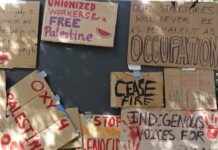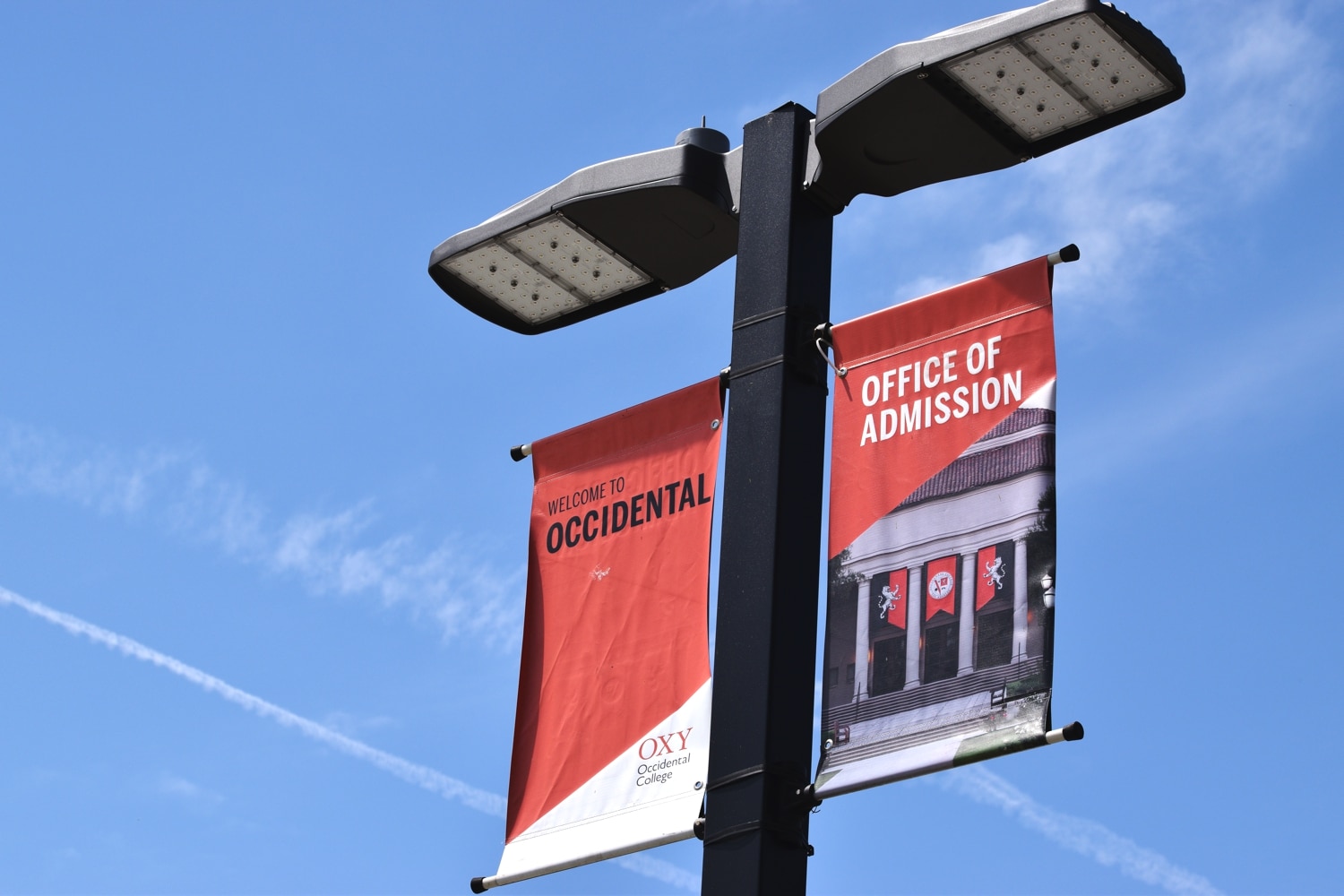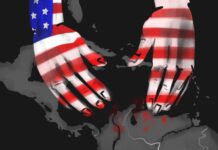Since September last year, the already precarious power balance in the Middle East together has fractured even further, with catastrophic consequences for the civilian population of the Arab world. Violence and unrest continue in Libya, the disastrous war in Iraq and Syria continues to tear society apart at the seams, and, most recently, a Houthi-led rebellion in Yemen has sent the Saudi-backed president fleeing for the coast. Factor in the recent terror attacks in Tunis, the Charlie Hebdo shootings in January and the horrific attacks on a university in Kenya by al-Shabaab this week, and it perhaps becomes a little easier to forgive President Obama for his premature self-congratulation in a speech regarding counter-terrorism policy on September 10th 2014. He cannot, after all, predict the future.
Whilst informing the American public about his government’s plan to tackle the Islamic State, the President praised U.S counter-terrorism policy in Yemen and Somalia, lauding it as an effective model to transplant to the Levant (despite the fact that Yemen remains the poorest country in the Arab world, and Somalia in the entire world, suggesting pacification, not progress, is the ultimate U.S goal). However, the collapse of the Yemeni government in the face of the rapidly advancing Houthi rebellion reveals how consistently short-sighted U.S foreign policy has been in the Middle East for decades.
Above: Houthi rebels defending positions near the Presidential Palace, Sana’a
Obama’s ‘Yemen model’ is dedicated to finding short-term solutions to long-term objectives; rather than addressing the root causes of fundamentalism in Yemen, Obama’s administration has pursued individual targets and groups, using drones and armed proxies as a substitute for boots on the ground. Nearly 54% of Yemen’s population of 25 million lives below the poverty line. Unemployment in January hit a staggering 40%, with youth unemployment as high as 65%. 70% of the population lives in rural areas, relying on agriculture in a country plagued by water shortages; even in Sana’a, the capital, only 40% of houses are connected to the municipal supply. Combined with a government that has failed to live up to the promises made after the Arab Spring to tackle corruption and create a more representative government and it becomes blindly obvious to even the least attentive observer why the country has proved such a hotbed of militant Islamist activity.
However, Obama’s administration continues to pursue the same foreign policy strategies that have repeatedly failed over the years. They have passed up the opportunity to invest in the infrastructure Yemen so desperately needs in favour of drone striking individuals in the middle of the desert, tearing apart families and pushing young men towards the very terror groups they set out to tackle. In many ways, the ‘Yemen model’ is emblematic of American foreign policy since the Second World War; namely pumping financial and military aid to whichever leader proves most amenable to U.S interests, regardless of their human rights record or governing ability. Countries across Latin America, South East Asia and the Middle East are still recovering American meddling to this day.
The effects of Obama’s irresponsible Middle East policy have made themselves clear in recent months; however, as Yemen slides into another civil war this is ceasing to be America’s fight. Instead, Yemen is rapidly becoming a proxy battlefield for a greater regional struggle for hegemony in the Persian Gulf. The Houthis, or Ansar Allah (‘supporters of Allah’), are Shia Muslims of the Zaydi sect, which represents around 20-30% of Yemen’s population, making them a substantial minority. After mistakenly believing that the promises of better representation after the Arab Spring would be realized, the Houthis renewed their armed struggle against Yemen’s new president, Abd Rabbuh Mansur Hadi, who has had to flee the capital in the face of the advancing Houthi rebels. With their Shia beliefs and hostility to Saudi Arabia, the Houthis have found a natural ally in Iran; prominent Houthi leaders visited Tehran in March, and consequently the International Crisis Group (ICG) have asserted that “Iranian support has become more vocal, promising economic aid that includes expanding ports, building power plants and providing fuel”.

A Houthi rebel stands guard in Sana’a
In response, an alliance of Sunni Arab states has been rapidly assembled, led by Saudi Arabia and Egypt but also including Turkey, Qatar and the UAE, to combat the perceived threat posed by the expansion of Iranian power. The alliance is novel; Egypt and Saudi Arabia fought a long and bloody proxy war in Yemen in the 1960s, in what became known as ‘Nasser’s Vietnam’. The new coalition underlines how much the political climate of the Middle East has changed since the independence era.
A bombing campaign was initiated by Saudi Arabia last week, and Arab air strikes have fallen consistently since then. Already the civilian cost of the war is being felt; on Monday, a stray Saudi rocket fell on a refugee camp in Hajjah province, killing at least 40 people. Critics have speculated about the actual level of support provided to the Houthis by Iran and have accused the Saudi’s of Netenyahu-style scare mongering in order to whip up support for their proxy war. One Saudi official went as far as to tell reporter Brian Whitaker that “Saudi Arabia needs to have a war with Iran… so it’s better to have the war on Yemeni soil than Saudi soil.”
Above: refugees in al-Mazraq camp, that was struck by a Saudi air strike on Monday, killing 40
With the success of the Iranian nuclear deal announced this morning, it seems likely that the Yemen conflict will be just one articulation of the battle for influence in the Middle East. In Iraq and Syria, Iranian backed Shia rebels continue to tackle the Islamic State, and they remain influential in the Palestinian occupied territories. As is already becoming clear, the ultimate victims of this power struggle will not be Saudi or Iranians, but civilians in the Arab countries unfortunate enough to be selected as an appropriate battlefield. The mess created by the conflict has provided ample ground for the reemergence of terrorist groups in Yemen; the Islamic State have claimed responsibility for bomb attacks on mosques in Sana’a that killed at least 137 people in March, and Al Qaeda in the Arabian Peninsula (AQAP) seized the opportunity to storm a prison in south-east Yemen, freeing several hundred inmates and a prominent AQAP leader. Al-Jazeera reported this afternoon that AQAP have gone on to seize a major army base in the south of the country, demonstrating that they are still a force to be reckoned with in the Gulf.
The UN high commissioner for human rights has warned that Yemen is a country “on the verge of collapse”, and his warnings seem justified. In short, U.S policy towards Yemen over the last decade has failed miserably. However, the conflict gives Obama an opportunity to begin making amends by working to defuse the situation. Relations with Iran are warming thanks to the nuclear deal, and a diplomatic solution to the conflict could be possible. Whether the President will learn from his and his predecessor’s mistakes will become apparent in the coming months.
A fully cited version of this post is available at www.elnawamis.wordpress.com
![]()







































